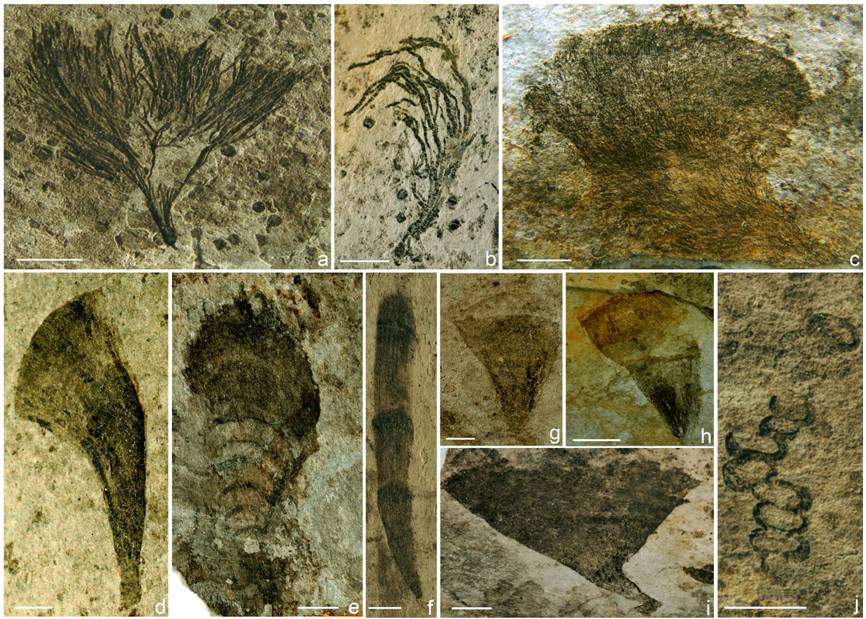Scientists from Nanjing Institute of Geology and Palaeontology, Chinese Academy of Sciences (NIGPAS), Virginia Polytechnic Institute and State University, USA, and Northwest University, PRC, report the discovery of a diverse assemblage of fossilised seaweeds from approximately 600 million year old rocks in Nature this week. The fossils, recovered from the early Ediacaran Lantian Formation in Xiuning of Anhui Province, South China, indicate that the morphological diversification of eukaryotes may have taken place much earlier than previously thought.
The deep-water Avalon biota (~ 579-565 Ma) is often regarded as the earliest known fossil assemblage of macroscopic and complex life forms. From the Lantian Formation, Prof. YUAN Xunlai from NIGPAS and his team discovered thousands of macroscopic carbonaceous compression fossils in the Lantian biota, which predates and is distinct from the Avalon biota but shows a comparable degree of diversity and complexity. The Lantian fossils were preserved in place in carbonaceous black shales deposited when the Earth had just recovered from a severe ice age. The centimetre-sized fossils represent around 15 species, including five new morphological types. Some resemble some modern algae, whereas others have no close equivalents among living organisms.
It was thought the oxygenation of deep oceans began in the middle Ediacaran Period around 580 million years ago, and this oxygenation event may have triggered the rise of the Avalon biota. Ediacaran deep oceans before 580 million years ago were believe to be devoid of free oxygen. In the Nature paper, YUAN and colleagues argue that the redox history of Ediacaran oceans may have been more complex. They suggest that, although the Lantian basin was largely devoid of free oxygen, brief oxic episodes existed and were opportunistically capitalized on by the Lantian organisms, which were subsequently killed and preserved when the condition switched back to anoxia. Further geochemical, palaeontological and sedimentological analyses are needed to fully understand these complexities.
Yuan Xunlai, Chen Zhe, Xiao Shuhai, Zhou Chuanming, Hua Hong. 2011. An early Ediacaran assemblage of macroscopic and morphologically differentiated eukaryotes. Nature. 470: 390-393

Seaweed fossils
Download:
